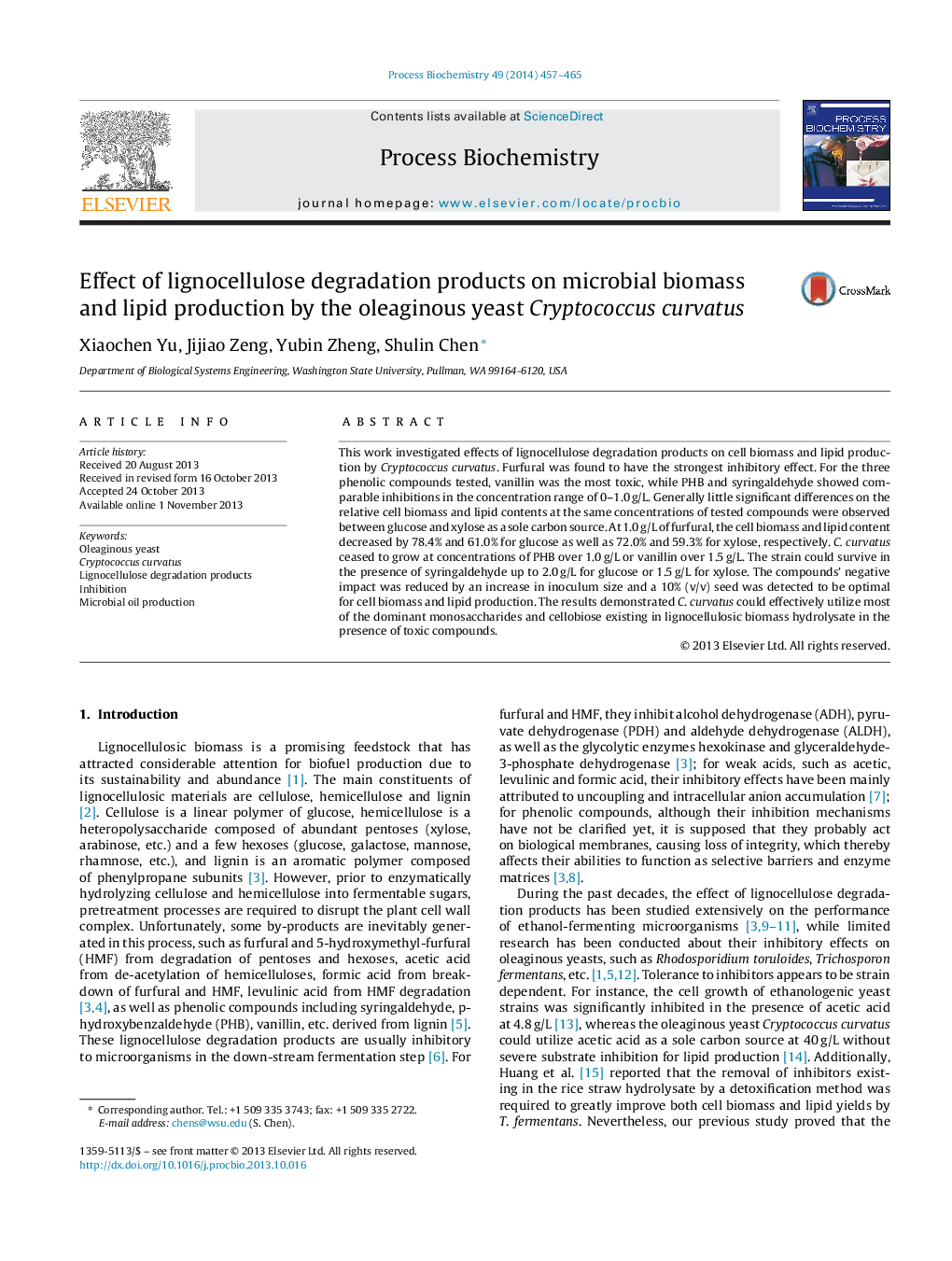| Article ID | Journal | Published Year | Pages | File Type |
|---|---|---|---|---|
| 10235459 | Process Biochemistry | 2014 | 9 Pages |
Abstract
This work investigated effects of lignocellulose degradation products on cell biomass and lipid production by Cryptococcus curvatus. Furfural was found to have the strongest inhibitory effect. For the three phenolic compounds tested, vanillin was the most toxic, while PHB and syringaldehyde showed comparable inhibitions in the concentration range of 0-1.0Â g/L. Generally little significant differences on the relative cell biomass and lipid contents at the same concentrations of tested compounds were observed between glucose and xylose as a sole carbon source. At 1.0Â g/L of furfural, the cell biomass and lipid content decreased by 78.4% and 61.0% for glucose as well as 72.0% and 59.3% for xylose, respectively. C. curvatus ceased to grow at concentrations of PHB over 1.0Â g/L or vanillin over 1.5Â g/L. The strain could survive in the presence of syringaldehyde up to 2.0Â g/L for glucose or 1.5Â g/L for xylose. The compounds' negative impact was reduced by an increase in inoculum size and a 10% (v/v) seed was detected to be optimal for cell biomass and lipid production. The results demonstrated C. curvatus could effectively utilize most of the dominant monosaccharides and cellobiose existing in lignocellulosic biomass hydrolysate in the presence of toxic compounds.
Related Topics
Physical Sciences and Engineering
Chemical Engineering
Bioengineering
Authors
Xiaochen Yu, Jijiao Zeng, Yubin Zheng, Shulin Chen,
